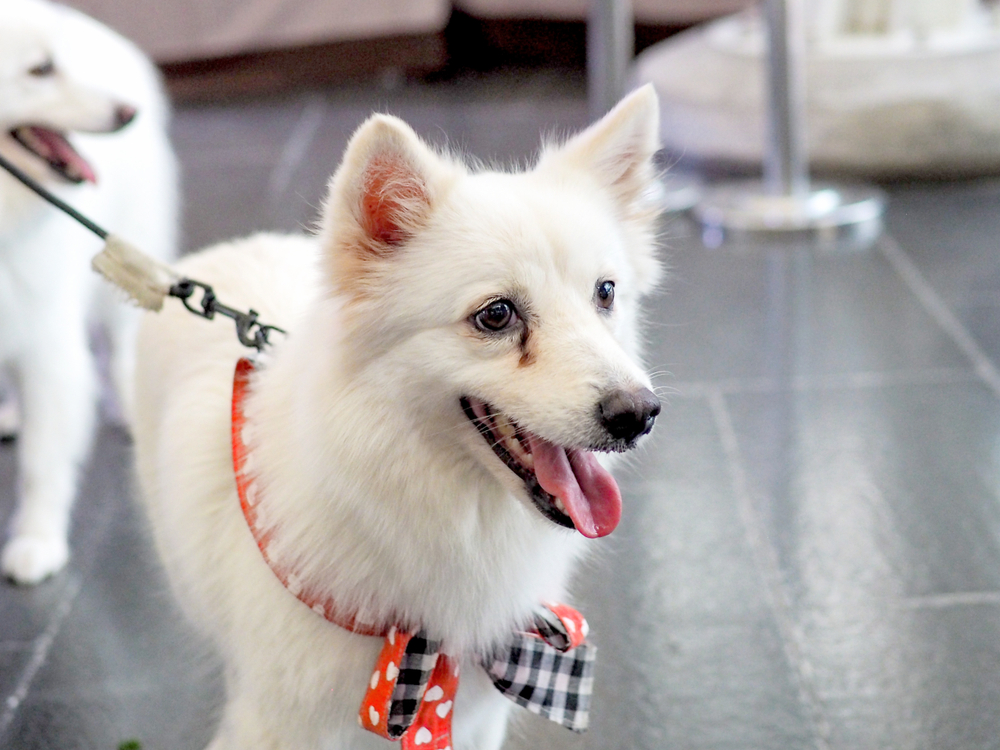Face Staining and How you can Prevent it
 October 17, 2018
October 17, 2018
Pets Training & Boarding takes a look at face staining and how you can prevent this problem in your precious pooch.
For some breeds, face staining is very common. This can be caused by a variety of reasons. The most important first step is to get a clean bill of health from your veterinarian in regard to your dog’s facial stains. Unusual facial stains or sudden stains can be caused by;
- Problems with the tear duct
- Ingrown eyelash
- Eye infection
- Poor diet
- Stress
- Drugs
- Use of plastic food bowls
- Food allergies
This is why it is important to double check with your vet that your pet is in top health before trying to battle the problem.
Facial staining is common amongst majority of dogs who have white faces. The most common breeds according to Pets Training & Boarding are;
- Bichon Frise
- Samoyed
- Maltese Terriers
- Poodles (all sizes)
- Husky
- Malamutes
- Shihtzu
There are millions of remedies to solve facial staining available on the internet, however care must be taken particularly with any harsh treatments around the eyes, that could lead to painful problems. It’s also good to keep in mind that not all treatments will work for each individual dog.
Facial stains are usually caused by iron molecules known as porphyrins that are excreted by dogs through their tears and saliva. When it sits on white fur it can stain, particularly after being exposed to sunlight. This is the reason the staining is prominent around the eyes and mouth of white dogs. If your dog is suffering from Epiphora or excessive tear production, it can escalate the staining around the eyes.
Your best point of call is your local groomer. Meet Kirsten Lambros a groomer from Pets Training & Boarding:
“If you happen to notice a change in your dog’s tear production, swelling, red-ness I would suggest going to see a specialist/Vet for further testing and investigation,” she recommends. “Tear Staining is generally not a health problem to be concerned about, however in some cases it can become a serious eye health problem.”
She advises pet owners to consider adding white vinegar to their dogs drinking water to help prevent face staining.
“To prevent face staining would require daily maintenance, we suggest: putting white vinegar into your dog’s drinking water to decrease eye staining,” Kirsten recommends. “Adding a teaspoon of white vinegar will change the waters pH levels, the slight increase in acidity will reduce any opportunity for bacteria or yeast to form.”
Prevention;
- Keep your pet’s face clean and clipped
- Add white vinegar to your pet’s meals
- Throw away the plastic bowls and only use porcelain, stainless steel or glass
- Regular sessions with a quality groomer
- Use a damp cloth to clean the face a few times each day
- Feeding a good quality diet
- If you have a high iron or mineral count in your water consider using bottled water
- Consider a natural supplement to help with staining
Plastic food and water bowls crack easily. These tiny cracks lock-in bacteria that can cause yeast to build up, making face staining worst. As your pet drinks, the water can splash back into their faces allowing this bacteria to enter the tear ducts. Using stainless steel, glass or porcelain can help prevent this. It’s also recommended to ensure your wash your pet’s bowls daily with hot soapy water and dry thoroughly.
